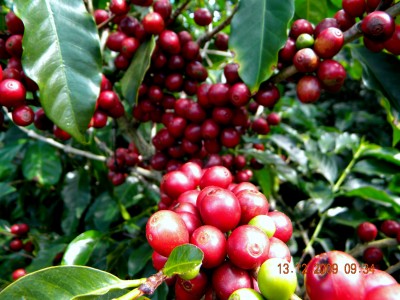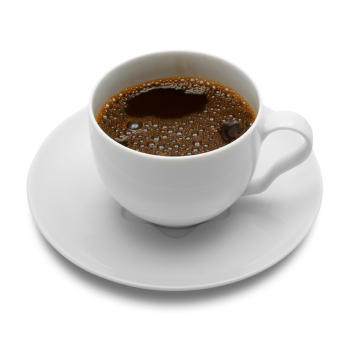
“HASTA EL ULTIMO BUCHITO! “, UNA FRASE QUE PEGO EN NUESTRO PAIS. PHOTOS.
Hacia 1830, cuando Cuba era todavía una colonia española, los criollos empezaron a tratar de diferenciarse de los peninsulares. Nacía la nacionalidad cubana y el café tinto se imponía al chocolate, se preferían los frijoles negros a los garbanzos y el arroz sustituía al pan que los españoles mojaban en los guisos. Los cubanos desechaban las corridas de toros para decidirse por las peleas de gallo y, con tal de acentuar la diferencia, pintaban las fachadas de sus casas con colores diferentes.
Desde entonces el café ha sido parte de la vida cotidiana del cubano. Al amanecer, el olor del café recién colado invade la casa y se escurre por la vecinería. Muchos podrán prescindir del desayuno, pero no de la taza de café que se necesita para comenzar el día con buen signo. Puede prepararse, y se agradece, a cualquier hora. Y es un rasgo común en todos los sectores sociales de la Isla demostrar hospitalidad con el ofrecimiento de una taza de café. Es rara la casa cubana donde no se brinde al visitante la preciada infusión. El cafecito, como le llaman no pocos con acento cariñoso, que a veces se bebe de pie, en la misma cocina, junto al fogón. El té nunca ha llegado a sustituirlo, la mayoría lo prefiere fuerte y amargo y empina la taza hasta sorber el último buchito.
OTROS LLEGADOS A CUBA
El tabaco era ya cubano cuando llegó Colón. La caña de azúcar fue traída a estas tierras por el propio Almirante. El café, ese otro personaje de categoría en la historia y la vida cubanas, comenzó aquí a cultivarse tarde, cuando ya el tabaco y el azúcar se conocían desde siglos atrás.
Despertaba especial interés. Si se cultivaba en otras islas del Caribe era lógico pensar, dada las semejanzas del clima, que sería también un cultivo apropiado para Cuba. Dice la tradición que el normando Gabriel Mathieu de Clieu, capitán de infantería, compartió, desde Europa a Martinica, su ración de agua con un cafeto. Así llegó el café al Caribe. Desde Martinica pasó a otras islas. Llegó a Haití en 1715 y a Jamaica en 1728. Su recorrido hasta Brasil muestra los avatares del cultivo: en 1727 el primer cafeto se introducía en ese país oculto en el ramo de flores que la esposa del gobernador de la Guayana francesa obsequió al teniente Francisco de Mello Palhera.

LLEGADA A CUBA
A Cuba llegó en 1748. Lo trajo el contador mayor José Gelabert y sembró las primeras plantas en una finca habanera de la localidad de Wajay. El oficial venía con aquellos primeros cafetos desde la colonia francesa de Saint Domingue, aunque también se dice que la primera planta llegó desde Puerto Rico, en 1769, lo que parece poco probable. En poco tiempo su cultivo se extendió a otros puntos de Occidente como Guanajay y Artemisa, la región central (Trinidad y Sancti Spíritus) y puntos montañosos orientales de la Isla.
Mucho antes el polvo se expendía en las farmacias porque, como en el resto del mundo, son los médicos los que ayudan a extender su gusto al recetarlo, al igual que el tabaco para curar casi todos los males.
Las primeras casas de café, hoy denominadas cafeterías, surgieron en La Habana entre 1762, año de la toma de la ciudad por los ingleses, y 1776, cuando se liberaron las trece colonias británicas en Norteamérica. La primera taberna que hubo fue el café, que hace unos años y totalmente reformado, volvió a abrir sus puertas en la Plaza Vieja. Le siguieron otras, pero hacia 1772 la autoridad colonial dictó una proclama que lo regulaba. No escaparon a sus ojos y oídos vigilantes que los nuevos locales fueran también lugares de reunión de los enemigos del despotismo español. Por ello el sabio Fernando Ortiz, a quien los cubanos consideramos nuestro tercer descubridor, pudo decir que el café en Cuba era de espíritu filibustero, herético, liberal y separatista. Con la importación del hielo, a principios del siglo XIX, floreció la vida cafetera. A partir de 1866 data el café del Louvre, en la céntrica ciudad de Remedios, la octava villa fundada por los españoles en la Isla, y un poco más de tiempo aquí surgió el Gran Café Europa, en la esquina de Obispo y Aguiar, en parte La Habana Vieja. Dos establecimientos que permanecen abiertos.
Así el café se convirtió en hábito en la Isla, tiene una función social y equipara gustos y estilos sociales. Aviva ideas y alivia el cansancio y el agotamiento. Asegura, recién hecho, un nivel de antioxidantes superior al de muchas frutas y verduras, es laxante y diurético y aleja los riesgos de Alzheimer y Parkinson. En las religiones afrocubanas se convierte en un elemento unificador de fuerzas espirituales y sociales, y sirve también para “hacer daño” si se mezcla con el sudor de una ceiba, es decir, con el agua destilada del tronco de ese árbol…
Pasó a la literatura, a las artes plásticas, a la música. Allí en Cuba se hacen cocteles con café y recetas que lo incluyen. Su aroma y sabor que aun nos acompañan.


“UNTIL THE LAST BUCHITO!”, A PHRASE THAT CATCHED IN OUR COUNTRY. PHOTOS.
By 1830, when Cuba was still a Spanish colony, the natives began to try to differentiate themselves from the Spaniards. Cuban nationality born black coffee and chocolate was imposed, were preferred to chickpeas black beans and rice that replaced the Spanish bread dipped in stews. Cubans bullfighting discarded to decide for cockfighting and to that of emphasizing the difference, painted the walls of their houses with different colors.
Since then, coffee has been a part of daily life of Cubans. At dawn, the smell of freshly brewed coffee fills the house and runs off the vecinería. Many could do without breakfast, but coffee cup that is needed to start the day with good sign. You can prepare, and appreciated, any time. And it is a common feature in all social sectors of the island showing hospitality by offering a cup of coffee. It’s rare Cuban house where visitors are not afforded the precious infusion. The cup of coffee, as they call him not a few affectionate accent, which sometimes is drunk standing in the same kitchen, by the stove. Tea has never replaced, most prefer the strong, bitter and steep the cup to sip the last sip.

The snuff was Cuban and when Columbus arrived. Sugar cane was brought to this land by the Admiral himself. The coffee, the other character class in Cuban history and life began to be cultivated here later, when the snuff and sugar were known for centuries.
Awoke special interest. If grown in other Caribbean islands was logical, given the similarities of climate, which would also be a suitable crop for Cuba. Tradition says that Gabriel Mathieu de Clieu Norman, captain of infantry, shared, from Europe to Martinique, their ration of water with a coffee. Thus came the coffee to the Caribbean. From Martinique happened to other islands. He arrived in Haiti in 1715 and Jamaica in 1728. His journey to Brazil shows the avatars of the crop: in 1727 the first coffee tree was introduced into the country hidden in the bouquet that the wife of French Guiana’s governor gave the lieutenant Francisco de Mello Palhera.
To Cuba arrived in 1748. It was brought by the chief accountant Jose Gelabert and sowed the first plants on a farm in the town of Wajay habanera. The officer came with those first coffee trees from the French colony of Saint Domingue, but also said that the first floor we arrived from Puerto Rico, in 1769, which seems unlikely. In no time its cultivation spread to other parts of the West as Guanajay and Artemis, the central region (Trinidad and Sancti Spiritus) and eastern mountain points of the Island.
Long before the dust expendía in pharmacies because, as in the rest of the world, are the doctors who helped extend his taste to prescribe it, like the snuff to cure almost all ills.
The first coffee houses, now referred cafes, surfaced in Havana between 1762, the year of the capture of the city by the British, and 1776, when it released the thirteen British colonies in North America. The first tavern there was coffee, which a few years ago and completely renovated, re-opened in the Plaza Vieja. We follow others, but by 1772 the colonial authority dictating a proclamation which regulated. Not escaped his vigilant eyes and ears to the new premises were also meeting places for the enemies of Spanish despotism. Therefore the sage Fernando Ortiz, whom Cubans consider our third discoverer, could say that coffee in Cuba was filibuster spirit, heretical, liberal and separatist. With the import of ice, in the early nineteenth century, life flourished coffee. From 1866 dating coffee The Louvre, in the central town of Remedios, the eighth village founded by the Spanish on the island, and a little more time here in the Grand Café Europe arose, at the corner of Bishop and Aguiar, partly Old Havana. Two establishments that remain open.
Thus coffee became habit in the island has a social function and equates social tastes and styles. Aviva ideas and relieves fatigue and exhaustion. Ensures, freshly brewed, a higher level of antioxidants than many fruits and vegetables, is laxative and diuretic and away the risks of Alzheimer’s and Parkinson’s. In the African-Cuban religions becomes a unifying element of spiritual and social forces, and also serves to “damage” if mixed with the sweat of a ceiba tree, ie distilled water that tree trunk …
He went to the literature, the visual arts, music. There in Cuba cocktails made with coffee and recipes that include it. Is the aroma and taste with us.
Agencies/ Wiki/ Ciro Bianchi/ Extractos/ Excerpts/ Internet Photos/ Arnoldo Varona.
www.The CubanHistory.com
THE CUBAN HISTORY, HOLLYWOOD.



